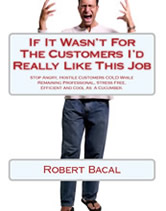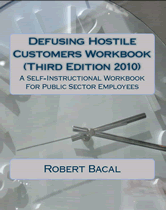
The following is an article from our book entitled TQM In The Public Eye. The book is no longer available.
TQM As Organizational Change
Overview
Moving to TQM is like any other organizational change. It must be managed effectively, and leaders of the change must take into account aspects of the organization's current "culture".
In fact, although TQM brings a number of benefits to those in the organization, you can expect some people to be cynical and resistant to change. Let's face it. Everyone in government has seen management fads come and go.
Thankfully, a well managed TQM organizational change is likely to bring most if not all people on side over time.
Organizational Change Principles
1) Time
Any change (and its attached benefits) will take longer to realize than you expect. Typically, it may take as long as two or three years to have TQM working at its peak.
2 Resistance
Regardless of the objective nature of the change, some (even many) people will resist it because it is unfamiliar. TQM must be introduced so that it maximizes people's enthusiasm and minimizes resistance.
3. Leadership
Any change will succeed or fail based on the ability of the change leaders to lead. People will take their cues about TQM from the management. If management show that they are committed, employees will become so. If management waffles, hedges, and backs off, then employees will see this as just more rhetoric of little importance.
4. Persistence
Nobody is telling you that this process is easy. The worst thing a manager can do is start the process, and when it gets difficult, stop it. That breeds contempt for both the process and the manager. Managers need to commit over the long haul and realize they must be persistent while the rest of the organizations works at "getting it".
5. Consistency
The primary mistake managers make is that they become inconsistent. Perhaps most of the time, their thinking and actions reflect the principles of TQM. However, not all the time. This tells employees that the manager is not serious. As soon as a manager suggests that a poor product or service be delivered, the game is up. Instant lack of credibility.
Consistency also means including employees in the planning of TQM activities, treating employees as the manager's customers, and a number of other things.
6.Incentive
People will embrace changes that they see are in their own self-interest. When presenting or deal ing with TQM changes it is important that managers highlight and focus on the benefits to the other people in tt7e organization.
7. Communication
Change will be accepted or rejected based on the effectiveness of the communication about it. Communication must be frequent, of a two-way nature, and balanced (both positives and negatives). It must begin as early as possible in the process.





